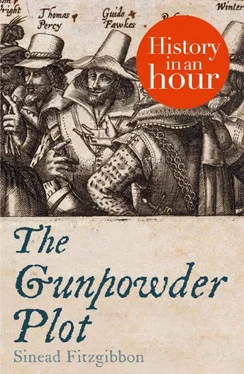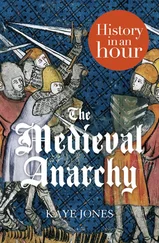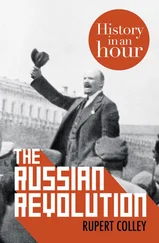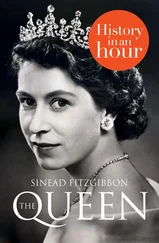Edward VI and Mary I
When Henry died in 1547, his youngest child and only male heir, Edward, ascended to the throne to become King Edward VI. He was only nine years old at the time of his coronation. Brought up in the new faith, Edward, together with his Protestant guardians, earnestly continued with Henry’s programme of reform. Under Edward’s reign, Henry’s policy of dissolution of the monasteries was completed. This left the Church all but bankrupt, with most of the wealth transferred to the King’s coffers. The reign of Edward VI, however, was not destined to last long. A sickly child, the young king died in 1553 at the age of fifteen. He left behind a country where the Church of England had become quite firmly established. This, however, was all about to change with the ascendancy of his half-sister Mary to the throne. During the turbulent years of her father’s religious reforms, Mary, Henry’s eldest child, had managed to retain her Catholicism in the face of severe opposition. In fact, it could be said that the harsh treatment of her mother, Catherine of Aragon, at Henry’s hands had only served to harden Mary against the very idea of Protestantism. Her unquestioning devotion to her mother’s religion was set in stone. It is hardly surprising, then, that when Mary became queen, she quickly set about accomplishing her long-held ambition of restoring England to the Catholic faith.
Unfortunately, in her zeal to undo all her father’s reforms, Mary revealed a hatred for Protestantism that was all-consuming. She regarded all adherents to the new religion as heretics, and displayed no compunction in burning at the stake those suspected of harbouring Protestants or with Protestant leanings themselves. In all, 237 men and 52 women met a painful end during Mary’s reign. This willingness to kill in the name of Catholicism gained her a reputation for mercilessness that would rival her father’s. History would not judge Mary’s actions in promoting the old faith kindly – she would be remembered for centuries to come as ‘Bloody Mary’.
Elizabeth I
After Mary’s death in 1558, the last of the Tudor children came to the throne. Like Edward before her, Elizabeth’s sympathies lay with the Protestant cause, and so her coronation saw the pendulum swing once again back to the Protestant religion.
Elizabeth I
A year later, in 1559, the Act of Supremacy and the Act of Uniformity were introduced, reinstating into law many edicts which had been repealed by Mary I. The Acts declared the celebration of Mass and other Catholic traditions illegal, while also enshrining Elizabeth’s supremacy over the Church of England. These new laws introduced fines for those who refused to attend Church of England services; abstainers were known as recusants. These measures were designed to make life very difficult for Catholics in England, and for the most part they succeeded in their aim. Catholic disillusionment set in, and the situation would soon worsen.
In 1570, in reaction to Elizabeth’s draconian measures against the Catholics in her realm, Pope Pius V issued the Papal Bull, Regnans in Excelsis . This missive ex-communicated Elizabeth from the Catholic Church, and as such absolved all Catholics of their allegiance to their Queen. In effect, the Papal Bull declared that Catholics had a duty to God before their monarch. This proclamation did little to improve conditions for the beleaguered Catholics of the Elizabethan era. All Catholics were now viewed as potential traitors to the Crown, effectively sanctioned by Rome.
The inexperienced Queen, fearful of uprisings against her authority, introduced more legislation. In a bid to prevent Catholics receiving religious instruction, priests were denounced as traitors and banned from English shores. Anybody found guilty of sheltering priests, or providing assistance to them in any way, would also be subject to the full force of the recusancy laws. Where once Catholicism was simply illegal, it was now regarded as high treason. Elizabeth did not hesitate to use this new legislation to her advantage; it soon became clear that she was as adept as her sister Mary at executing religious opponents and heretics.
These measures, however, failed in their ultimate aim of eradicating the Catholic threat; in fact, they succeeded only in forcing Catholics underground. While some priests did flee the country, many decided, in defiance of new laws, to remain in England. The fight to save the Catholic faith was aided by the arrival of hundreds of foreign-trained priests. The majority came from the English seminary in Douai, northern France – a college founded by the Jesuits in 1568 to instruct Englishmen in theology and provide training for priests. In all, over 450 priests arrived in England from foreign shores, of whom 130 were executed for their efforts to administer the Catholic faith. One such priest was Father Edmund Campion.
A Protestant by birth, Campion had won a scholarship to Oxford at the age of fifteen. His immense intellectual abilities earned him a fellowship of St John’s College, Oxfordand a deaconship in the Anglican Church. However, he secretly harboured sympathies with the Catholic faith and, in 1571, stole away to Douai to study with the Jesuits. After his conversion to Catholicism and his ordination as a priest in 1580, Campion returned to England on a mission to support his fellow clergymen. After a year spent travelling around the English countryside, he was finally arrested by Elizabeth’s men. He was brought to the Tower of London and tortured. Refusing to denounce his faith, he was sentenced to death in 1581. If Elizabeth hoped his execution would damage the morale of the Catholic crusaders, she was to be sorely disappointed. Instead, his death elevated him to a Catholic martyr and the circumstances of his death inspired Catholics to re-double their efforts in the face of Protestant persecution.
The survival of priests during this difficult time would not have been possible without the protection of the recusant population. Proving themselves to be just as undeterred by the threat of the recusant laws as the priests, many of the subjugated Catholic population were willing to help defy Elizabeth. Catholic women, in particular, became central to the Catholic resistance movement. Regardless of the danger to themselves, they provided priests with vital support in the form of food and shelter, often concealing them in their own homes. Hiding places or ‘priest holes’ became a feature of recusant households, saving many members of the Catholic clergy from the gallows. Despite the constant danger, many continued to practise their Catholic faith in secret.
As the gulf between Catholics and Protestants widened, a pervasive and insidious atmosphere of fear and suspicion descended upon the population, which was to provide a fertile breeding ground for the radicalization of the disaffected Catholic minority.
James I
Following the death of Elizabeth in 1603, the crown passed to the incumbent Scottish king, James VI. As the grandson of Henry VIII’s sister, James had a legitimate claim to the English throne, and was therefore met with little opposition from the English. In fact, his ascension was one of the smoothest and most uncontentious transitions to power the country had ever seen. One of his first acts as King James I of England was to introduce the Union of Crowns, whereby he declared Scotland and England to be united under one monarch.
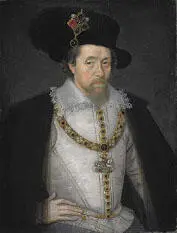
James I
Despite the fact that the new King was a confirmed Protestant – having being brought up in a strict Calvinist tradition by Church of Scotland ministers – many of the country’s disaffected Catholics believed that James’s arrival on the English throne would herald an improvement in their fortunes. This optimism was based on James’ strong familial connection to the old religion: his mother, Mary Queen of Scots, had been a devoted Catholic. The early signs were very encouraging: when James initially relaxed the fines levied on recusants, the Catholic population was overjoyed.
Читать дальше
